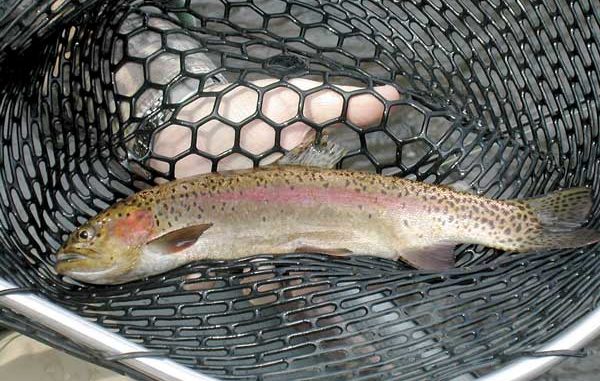
The Upstate’s backcountry can open the door to some outstanding trout-fishing adventures. The small streams offer tranquility and solitude that is often missing from most fishing destinations in today’s crowded, hectic world. The size of the fish will be nothing to brag about, but at some point, you may come to the realization that the rugged and beautiful scenery is the real catch.
Trout streams in the backcountry are usually much smaller than those found at lower elevations. They often traverse steep, narrow gorges, and their flow is punctuated by waterfalls and crashing cascades. Although the water is clear, cold and highly oxygenated, it’s also relatively sterile, and food is scarce. Trout adapt by being opportunistic, feeding on any passing morsel that appears natural.
With the backcountry trout’s opportunistic feeding habits, fly selection is not critical. Any buggy-looking dry fly that floats high will have its share of success. I have had many good days fishing attractor patterns with prominent yellow or orange coloration, such as the Stimulator, Orange Trude or Yellow Humpy. These flies float like a cork and often provoke vicious strikes from hungry trout.
Nymphs and sub-surface flies will catch trout just as well as dries, but they are usually no more effective, either. So why deny yourself the thrill of seeing a trout explode to the surface to inhale your fly if you don’t have to?
It would be a foolish to mistake the backcountry trout’s enthusiasm for flies with their being easy marks. The fish in this environment are very wary of movement above the water line — and sounds below it.
Always approach a fishy-looking spot from downstream. Trout that live in moving water always face upstream, waiting for food to be washed down to them. Approaching the pool from below will allow a reasonable cast, with less chance of your being detected.
Wear drab-colored clothing. Pay no attention to those staged magazine photos showing fishermen wearing red shirts and bright-colored caps. Bright colors along a stream make eye-catching photographs, but they catch the eye of spooky trout too. Green, olive, sage, and brown are tones that will help camouflage your presence and keep trout from detecting you.
Try to remain out of the sun. If you have the choice of casting from the sunny or shaded side of the stream, choose the shade. Standing and casting in the direct sun is no better than wearing a beacon on your head, announcing your presence to the fish below the water’s surface.
Try to wade as little as possible. Many backcountry streams are small enough to nearly step across. Wading or walking through the water is rarely necessary, and it can really put fish down. Trout cannot hear sound above the water, but they certainly can hear and feel underwater vibrations and rocks hitting against one another. If you must get into the water, walk as gently as possible without shuffling your feet along the stream bottom.
There are two schools of thought when it comes to fly rods and small, mountain streams. On one hand, a shorter-length rod of 7 to 8 feet is easier to maneuver in the tight rhododendron thickets and tree canopies often found along backcountry waters. However, a longer rod, 8 ½ or 9 feet, has more reach and allows better line control when presenting a fly in tight quarters and through tricky currents. Both approaches have considerable merit, and one should be chosen based on your comfort level and equipment familiarity.
Carrying a small backpack is a smart idea on backcountry fishing excursions. In addition to fishing gear, a backpack can carry a water bottle, extra clothes, and lunch. Important safety items such as a first aid kit, compass, flashlight, matches, knife and a water filter should be included as well.
No matter how clear and cold the water appears to be, it’s never completely safe to drink directly from the stream. A bout with a little intestinal parasite called Giardia will leave you very sick for quite some time. Carry water in with you or filter the stream water before drinking it.
All of our backcountry streams and wilderness deserve a great deal of respect. Never litter, and always leave as little impact behind as possible. Have fun and be safe when venturing into the backcountry with fly rod and reel and you will be rewarded many times over with beautiful little fish and a day’s worth of memorable scenery.



Be the first to comment